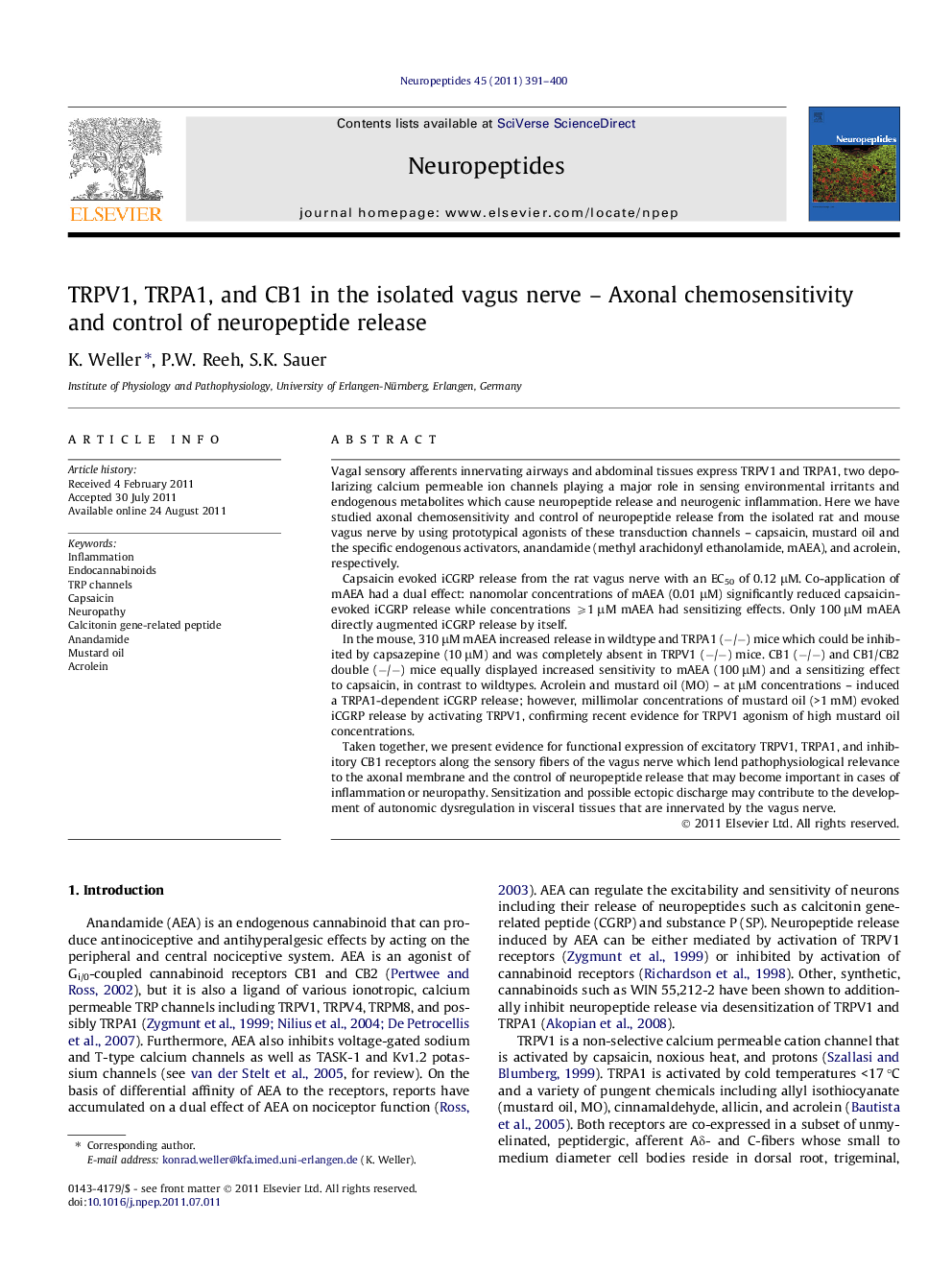| Article ID | Journal | Published Year | Pages | File Type |
|---|---|---|---|---|
| 2808155 | Neuropeptides | 2011 | 10 Pages |
Vagal sensory afferents innervating airways and abdominal tissues express TRPV1 and TRPA1, two depolarizing calcium permeable ion channels playing a major role in sensing environmental irritants and endogenous metabolites which cause neuropeptide release and neurogenic inflammation. Here we have studied axonal chemosensitivity and control of neuropeptide release from the isolated rat and mouse vagus nerve by using prototypical agonists of these transduction channels – capsaicin, mustard oil and the specific endogenous activators, anandamide (methyl arachidonyl ethanolamide, mAEA), and acrolein, respectively.Capsaicin evoked iCGRP release from the rat vagus nerve with an EC50 of 0.12 μM. Co-application of mAEA had a dual effect: nanomolar concentrations of mAEA (0.01 μM) significantly reduced capsaicin-evoked iCGRP release while concentrations ⩾1 μM mAEA had sensitizing effects. Only 100 μM mAEA directly augmented iCGRP release by itself.In the mouse, 310 μM mAEA increased release in wildtype and TRPA1 (−/−) mice which could be inhibited by capsazepine (10 μM) and was completely absent in TRPV1 (−/−) mice. CB1 (−/−) and CB1/CB2 double (−/−) mice equally displayed increased sensitivity to mAEA (100 μM) and a sensitizing effect to capsaicin, in contrast to wildtypes. Acrolein and mustard oil (MO) – at μM concentrations – induced a TRPA1-dependent iCGRP release; however, millimolar concentrations of mustard oil (>1 mM) evoked iCGRP release by activating TRPV1, confirming recent evidence for TRPV1 agonism of high mustard oil concentrations.Taken together, we present evidence for functional expression of excitatory TRPV1, TRPA1, and inhibitory CB1 receptors along the sensory fibers of the vagus nerve which lend pathophysiological relevance to the axonal membrane and the control of neuropeptide release that may become important in cases of inflammation or neuropathy. Sensitization and possible ectopic discharge may contribute to the development of autonomic dysregulation in visceral tissues that are innervated by the vagus nerve.
